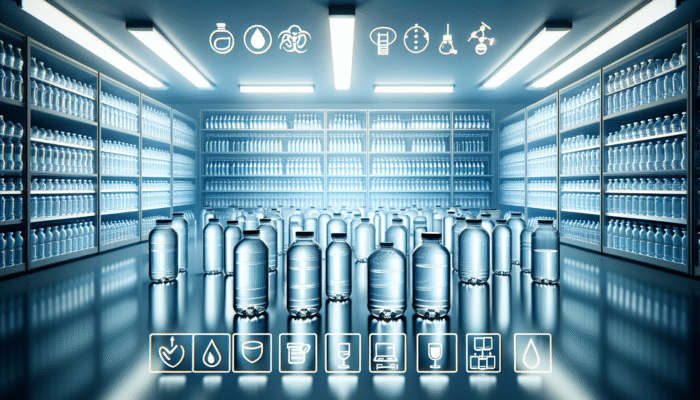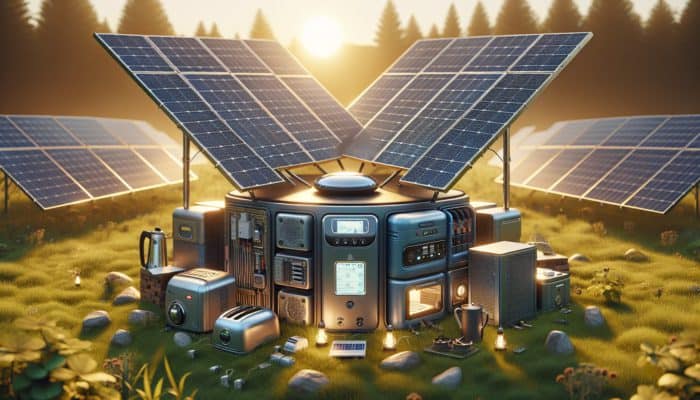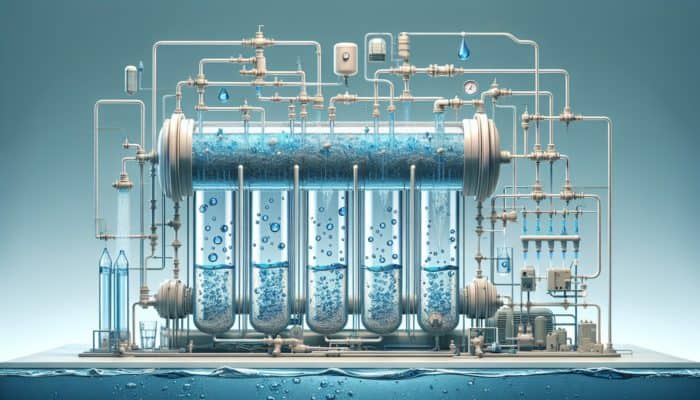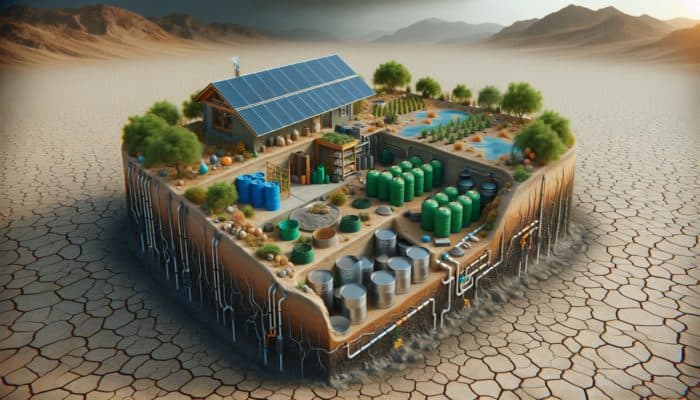Understanding the Vital Importance of Emergency Water Reserves for Community Survival
Addressing the Immediate Necessity for Water Reserves During Crises

Emergency water reserves play an indispensable role in the survival strategies of communities, especially during emergencies when access to clean and safe water can become extremely limited. Water is essential not only for hydration but also for maintaining public health and sanitation standards. For instance, in the aftermath of devastating events like floods or earthquakes that disrupt existing water infrastructure, having adequate water reserves becomes a critical lifeline for affected individuals. This is not just about meeting basic hydration needs; it's fundamentally about safeguarding health, preventing disease outbreaks, and building community resilience in the face of adversity. The provision of safe drinking water can significantly influence recovery and survival rates in any community impacted by crises.
In the aftermath of a disaster, the instinctive response of individuals is to seek out safe sources of drinking water. In urban environments, the scarcity of available water can lead to widespread panic, confusion, and potential chaos. Communities that prioritize the establishment of emergency water reserves can ease this distress by providing immediate access to potable water. The need for such reserves is especially critical in areas that are prone to natural disasters, but the urgency has intensified worldwide as the impacts of climate change exacerbate extreme weather events. From the drought-stricken regions of sub-Saharan Africa to the flood-prone coastal areas of Southeast Asia, one fact remains indisputable: the availability of water is essential for human survival.
Boosting Preparedness with Strategic Water Management Techniques
Preparedness is not just a trendy concept; it is a foundational strategy that underlies the protection of health and hygiene during emergencies. Imagine a scenario where a hurricane is poised to strike a coastal town. Those who take proactive measures by stockpiling emergency water reserves can significantly lessen their risk of dehydration and avert health crises. As available water supplies dwindle and emergency services become overwhelmed, having reserved water supplies allows individuals to uphold hygiene practices that are critical for preventing the spread of diseases.
The benefits of preparedness extend beyond individual health concerns. Communities that actively champion the significance of emergency water reserves can maintain high sanitation standards, which consequently reduces the risk of disease outbreaks such as cholera or typhoid fever—conditions that thrive in unsanitary environments. The old adage, “an ounce of prevention is worth a pound of cure,” resonates strongly in this context. By equipping communities with the necessary tools to navigate challenging situations, countless lives can be preserved while fostering a culture of resilience and responsibility that extends to all crucial resources.
Building Long-Term Stability and Security through Strategic Water Reserves
Long-term stability is not merely an abstract goal; it is a tangible result for those who recognize the significance of establishing emergency water reserves. These reserves act as a protective barrier against the unpredictable challenges posed by climate change, including droughts, floods, and other water-related issues. By investing in comprehensive water storage solutions and strategically developing these reserves, communities not only prepare for immediate crises but also lay the foundation for enduring stability and resilience.
Consider cities that implement thorough water management strategies—they typically experience a notable decrease in economic losses during crises. Agriculture, which serves as a backbone for many economies, flourishes when farmers have reliable access to water, even in times of drought. This results in a ripple effect that enhances food security, economic stability, and social cohesion within communities. Preparing for potential water shortages is akin to paving the way for a sustainable future, enabling communities to adapt and thrive amid various challenges.
Adopting Comprehensive and Innovative Water Storage Solutions

Effectively storing water involves more than merely filling containers; it requires a combination of scientific understanding and practical skills. Successful strategies for emergency water reserves must encompass methods that ensure safety, accessibility, and usability. First and foremost, the selection of appropriate storage containers is crucial. Food-grade plastic or glass containers are highly recommended, as they prevent harmful chemicals from leaching into the water. Additionally, conducting routine inspections and adhering to established disinfection protocols of the stored water is essential to maintain its safety.
Globally, innovative storage solutions are emerging, such as underground cisterns designed to capture rainwater in arid regions and advanced filtration systems that render surface water safe for consumption. For example, in India, community-led initiatives focus on rainwater harvesting, creating sustainable practices that contribute to replenishing groundwater aquifers. As we explore these methods, it becomes evident that effective water storage transcends mere preparedness; it embodies our collective creativity and resourcefulness to ensure water safety and accessibility for everyone.
Fostering Collaborative Efforts Between Communities and Governments for Effective Water Management
Collaboration stands as the cornerstone of sustaining emergency water reserves. It is insufficient for individuals to act in isolation; a concerted effort between community members and government entities is vital for establishing effective water management systems. Government agencies play a critical role in formulating supportive policies, funding infrastructure projects, and encouraging robust community engagement. When government bodies collaborate with local organizations, transformative results can be achieved.
Look to successful models worldwide, such as the community-driven water management systems in Sweden. In this model, local stakeholders actively participate in monitoring and maintaining water reserves, fostering a sense of ownership and accountability. Conversely, in areas where governmental support is lacking, communities often struggle to create effective reserves. The takeaway is clear: collaboration amplifies resources and builds trust and resilience within communities during emergencies.
Exploring the Different Types of Emergency Water Reserves Available
Understanding the Critical Role of Surface Water Storage in Emergencies
Surface water reserves, which include lakes, reservoirs, and ponds, are vital in supplying communities with emergency water supplies. In scenarios where natural disasters disrupt standard water supply routes, these bodies of water can become essential lifelines, provided they undergo appropriate treatment before being consumed. For example, indigenous populations in the Amazon rainforest rely on large rivers as sources of drinking water after thorough purification, demonstrating how nature can serve as a reservoir in critical moments.
The effective utilization of surface water hinges on proper treatment methods. Technologies such as UV purification and advanced filtration systems are crucial for ensuring that harvested surface water is safe for drinking. Many urban areas have adopted stormwater management systems that capture and treat rainwater runoff, turning a potential liability into a valuable resource. The global push for sustainability encourages innovative thinking regarding how we harness available resources, thereby redefining our relationship with water.
Leveraging Groundwater Reserves for Sustainable Water Supply Solutions
Groundwater is often an undervalued yet indispensable resource for ensuring a reliable water supply during emergencies. Accessed via wells and boreholes, these reserves can provide essential resources when surface water sources are compromised. Countries like Ethiopia and India have historically relied on groundwater for agricultural and domestic purposes, highlighting its critical importance in everyday life.
However, accessing this precious resource requires careful management. Over-extraction can lead to depletion, resulting in long-term water shortages. Innovative techniques such as rainwater harvesting and recharge wells play a crucial role in replenishing groundwater supplies, ensuring that these reserves remain viable for future emergencies. With a strategic approach, communities around the world can tap into the potential of groundwater to foster sustainability and security.
Understanding the Significance of Bottled Water Stockpiles in Emergency Preparedness
The convenience and accessibility of bottled water stockpiles make them a critical element of emergency water reserves worldwide. Ready for immediate use, bottled water is ideal for rapid distribution to populations affected by emergencies. Following disasters like hurricanes or earthquakes, bottled water often becomes a highly sought-after commodity, frequently being among the first supplies dispatched to impacted regions.
Yet, while bottled water offers immediate relief, it also raises significant sustainability concerns. The environmental impact of plastic waste cannot be ignored. Communities must find a balance between the benefits of bottled water and the urgent need to reduce plastic consumption. Exploring alternatives, such as refillable water stations during non-emergency periods, can help mitigate this issue. Innovative solutions, including biodegradable packaging or large-scale water purification systems, can ensure that bottled water remains a viable option without negatively impacting the environment.
Strategic Planning and Implementation for Effective Water Reserves
Evaluating Community Water Needs for Customized Reserve Strategies
Identifying a community's specific water requirements is essential for establishing effective emergency water reserves. This process extends beyond merely counting the population; it entails calculating daily consumption needs and anticipating spikes in demand during crises. For instance, the average individual in a temperate climate typically requires two to four liters of water daily for hydration, but this figure can double or triple in high-stress environments or hotter climates.
Accurate assessments necessitate collaboration with public health officials, community leaders, and disaster preparedness organizations to define what constitutes “normal” for each locality. For example, communities in areas prone to drought may need larger reserves compared to those in regions with consistent rainfall. By analyzing historical data, patterns of water use, and potential future scenarios like population growth or climate change, communities can develop a tailored water reserve strategy that addresses their unique circumstances.
Creating a Holistic Water Reserve Strategy for Strengthened Resilience
Formulating a comprehensive water reserve plan is akin to crafting a blueprint for community resilience. This strategy involves identifying potential water sources, determining optimal locations for storage, and devising effective distribution methods to ensure efficient usage. A well-structured plan should integrate diverse sources—from surface water to groundwater and bottled supplies—ensuring that no single resource is relied upon exclusively.
Engaging stakeholders throughout the planning process is crucial. Local governments, emergency services, community organizations, and residents should have a voice in shaping the plan. This collaborative approach fosters a sense of ownership and accountability for the initiative's success. Additionally, comprehensive contingency plans for various scenarios must be developed to ensure that when disaster strikes, response protocols are clear, efficient, and equitable.
Promoting Community Engagement and Educational Outreach for Water Preparedness
The successful implementation of emergency water reserves significantly relies on active community involvement and education. When individuals understand the importance of water reserves, they are more likely to participate in planning and preparedness activities. Workshops, community meetings, and educational campaigns can enhance awareness about the necessity of water conservation and the pivotal role of emergency management.
Programs that actively engage community members in practical actions—such as the construction of rainwater harvesting systems or the coordination of bulk water storage efforts—foster a sense of unity and purpose. In countries like Kenya, grassroots movements focused on water education have empowered communities to take control of their local water resources, greatly improving disaster preparedness. By promoting a culture of awareness and involvement, communities can ensure that their water reserve systems are not only established but also resilient and effective.
Maintaining and Managing Water Reserves for Optimal Performance
Conducting Routine Inspections and Assessing Water Quality
The classic saying, “An ounce of prevention is worth a pound of cure,” is particularly applicable to the maintenance of emergency water reserves. Regular inspections and assessments of water quality are critical to ensuring that reserves remain safe and usable during emergencies. Communities should implement a routine inspection schedule that evaluates both the physical storage facilities and the quality of the stored water.
Testing for contaminants such as bacteria, nitrates, or harmful chemicals should occur at least once a year. In areas susceptible to flooding, more frequent testing may be necessary to quickly address any potential contamination. Local health departments or environmental agencies can provide resources and support for these testing initiatives. By prioritizing routine maintenance and testing, communities can protect against the risks of relying on contaminated water during emergencies.
Recognizing the Value of Preventive Maintenance in Water Management
Preventive maintenance is often overlooked yet remains a pivotal aspect of effective emergency water reserves. It is far more cost-effective to maintain water storage facilities and equipment proactively than to deal with the repercussions of contamination or system failures afterward. Simple measures, such as ensuring proper sealing of water storage tanks, can prevent the entry of pollutants and debris.
Training volunteers or local officials on maintenance protocols can foster a sense of responsibility within the community. Scheduled maintenance tasks—such as cleaning storage tanks, checking filtration systems, or repairing leaks—should be documented to ensure accountability. Cultivating a culture of preventive maintenance instills confidence; when the time comes for communities to rely on their reserves, they can do so with peace of mind.
Implementing Effective Inventory Management Techniques for Water Supplies
Maintaining a proficient inventory management system for emergency water reserves is crucial to ensuring that supplies are readily available when needed. This involves keeping an accurate count of bottled water stockpiles, monitoring expiration dates, and implementing a first-in, first-out (FIFO) method to minimize waste. Regularly updating inventory records helps identify shortages and effectively plan for replenishment.
Communities can leverage technology to optimize inventory management. Simple tracking software or mobile applications can automate notifications for restocking and testing schedules, improving efficiency. In larger urban areas, collaborating with local businesses to secure support and resources can bolster inventory levels and enhance operational efficiency. By prioritizing effective inventory management, communities enhance their emergency preparedness and ensure that resources are available when they are most needed.
Improving Distribution and Access to Emergency Water Reserves
Developing Efficient Distribution Systems for Water Supplies
During crises, timely access to resources is essential, making the development of efficient distribution systems for emergency water reserves critical. Delays in delivering water to affected communities can exacerbate suffering and hinder recovery efforts. Communities must craft and implement distribution plans that enable rapid delivery to those in need, particularly in densely populated or remote areas.
Utilizing a combination of local volunteers and established delivery networks can optimize distribution efforts. For instance, partnerships with local businesses or non-profit organizations can facilitate swift mobilization of resources. In urban environments, predetermined distribution points can streamline access, ensuring that water reaches those in need without unnecessary delays. Efficiency in distribution not only saves lives but also rebuilds public trust in emergency response systems.
Ensuring Fair Access to Water Resources for Every Community Member
Equitable access to emergency water reserves is fundamentally a matter of social justice, particularly during crises when disparities in access become glaringly apparent. Vulnerable populations often encounter the most significant barriers to obtaining essential resources. To guarantee that all community members receive the assistance they require, planners must prioritize equity in their distribution strategies, ensuring that everyone, regardless of socioeconomic status, can access vital resources during emergencies.
Collaborating with community organizations that understand the unique needs of marginalized groups can enhance equitable access. Regular engagement with these communities can lead to tailored solutions, such as mobile distribution units that reach isolated locations or specific outreach programs to address language barriers. In the aftermath of disasters, ensuring fair access to water can serve as a lifeline for those often overlooked, emphasizing the importance of inclusivity in crisis response.
Setting Up Emergency Water Stations for Convenient Community Access
Establishing emergency water stations in strategic locations can create accessible points for water distribution during crises. These stations act as hubs where community members can collect essential drinking water, minimizing the need for individuals to travel long distances when resources are scarce. The effective placement of these stations—such as in community centers, schools, or places of worship—ensures that individuals can access water with relative ease.
Communities should consider deploying portable water stations that can be quickly set up in response to emergencies. These systems can be positioned based on specific needs and relocated as circumstances change. Training volunteers to manage these stations promotes community involvement while ensuring that water distribution operates smoothly and efficiently. Emergency water stations can fundamentally reshape how communities respond to crises, prioritizing access to clean water for all involved.
Implementing Monitoring and Reporting Systems for Transparency and Accountability
To ensure effectiveness and transparency in water distribution and access during emergencies, communities must establish robust monitoring and reporting systems. This involves collecting data on water usage, distribution patterns, and community feedback to continuously refine operations. Technology plays a critical role in this process; mobile applications or online platforms can facilitate real-time tracking of water supplies and distribution efforts.
Involving residents in monitoring initiatives fosters a sense of accountability and community ownership. Regular reports can be shared with the public, illustrating transparency in the distribution process and nurturing trust within the community. By prioritizing monitoring and reporting, communities can adapt to changing conditions, ensuring that their emergency water reserves remain effective and accessible for all.
Identifying Challenges and Developing Solutions for Water Reserve Initiatives
Addressing Limited Resources and Funding Challenges for Water Reserve Programs
The challenge of limited resources and funding can significantly hinder the establishment and maintenance of emergency water reserves. Often, communities find themselves vying for funding against other pressing needs, creating a daunting catch-22 situation. However, by pursuing grants, forming partnerships with local businesses, and engaging in community fundraising initiatives, they can successfully navigate these challenges.
Innovative financing models can also help alleviate resource constraints. For example, social impact bonds can attract private investment in public projects by linking returns to performance metrics. Furthermore, leveraging technology to optimize resource management can reduce costs while enhancing overall efficiency. By creatively addressing funding and resource allocation issues, communities can build robust water reserve systems, even in the face of limitations.
Overcoming Infrastructure and Logistics Challenges in Water Management
Infrastructure and logistics issues can present significant obstacles when establishing emergency water reserves. To confront these challenges, communities must undertake thorough infrastructure assessments to identify gaps and weaknesses. This may involve evaluating current water distribution networks, storage facilities, and transportation systems to ensure they can adequately support emergency response efforts.
Planning for transportation logistics is equally crucial. In remote areas, utilizing all-terrain vehicles or drones can facilitate water delivery to hard-to-reach locations. Additionally, collaborating with local governments and disaster response organizations can streamline logistics management, ensuring a coordinated response. By proactively addressing infrastructure challenges, communities can strengthen their preparedness and resilience during disasters.
Promoting Public Awareness and Community Support for Water Initiatives
Increasing public awareness and garnering community support are vital for the successful implementation of emergency water reserve programs. Without public buy-in, initiatives can falter, leaving communities exposed. Campaigns that highlight the critical significance of water conservation, storage, and emergency preparedness can inspire community members to take proactive measures.
Engaging influencers and local leaders can amplify these messages, creating a ripple effect throughout the community. Educational initiatives, such as workshops and outreach programs, can empower residents to actively participate. By prioritizing public awareness and fostering community support, communities can nurture a culture of preparedness, ensuring that when emergencies arise, they are not merely ready—they are resilient.
Adopting Technological Innovations for Efficient Water Management
Transforming Water Purification Technologies for Emergency Applications
Innovative water purification technologies are revolutionizing our approach to emergency water reserves. In regions where clean water is scarce, portable purification systems can rapidly convert contaminated water into safe drinking options. Technologies such as solar purifiers or advanced filtration units offer sustainable solutions that are both accessible and effective.
For instance, in disaster-stricken areas, the swift deployment of mobile purification units can ensure that communities have immediate access to clean water when it is most critical. Additionally, emerging technologies like graphene-based filters promise breakthroughs in water treatment processes, potentially enhancing purification capabilities globally. By embracing these innovations, communities can strengthen their emergency water reserves and improve their overall resilience in the face of crises.
Frequently Asked Questions About Emergency Water Reserves
What are emergency water reserves, and why are they vital?
Emergency water reserves are stored supplies of clean water specifically designated for use during disasters or emergencies when regular sources become inaccessible, ensuring community survival.
Why are emergency water reserves critical for communities during crises?
They ensure access to safe drinking water during emergencies, help prevent dehydration, and maintain sanitation standards, ultimately saving lives in critical situations.
What actions can communities take to prepare for potential water shortages?
Communities can prepare by thoroughly evaluating their specific water needs, developing comprehensive reserve plans, and actively involving residents in educational and preparedness initiatives.
What types of water reserves are available to communities?
Available types include surface water storage (such as lakes and reservoirs), groundwater reserves (like wells and boreholes), and stockpiles of bottled water that afford immediate access during crises.
How can individuals contribute to local water reserve initiatives?
You can engage by volunteering for community water programs, advocating for funding and resources, and promoting sustainable water conservation practices within your community.
What are the benefits of community involvement in establishing water reserves?
Community involvement fosters a sense of ownership, accountability, and effective response during emergencies, significantly enhancing overall resilience and preparedness.
How often should water quality be tested in reserve systems?
Water quality should be tested at least annually, but more frequent testing is advisable in areas at risk of contamination due to flooding or other disasters.
In what ways can technology assist with managing emergency water reserves?
Technology can support water purification, optimize distribution systems, and monitor supplies, ensuring effective management and accessibility during emergencies.
What strategies ensure equitable access to water distribution?
Equitable access strategies include collaboration with local organizations, ensuring distribution points are accessible to all community members, and tailoring approaches to meet the needs of marginalized groups.
What role do governments play in establishing water reserve systems?
Governments support these initiatives by creating policies, providing funding, and partnering with local communities to build and maintain effective water reserve systems.
Join us on our journey on X!
The post Emergency Water Reserves: Essential Strategies appeared first on Survival Bite.
The Article Emergency Water Reserves: Key Strategies for Preparedness Was Found On https://limitsofstrategy.com
The Article Emergency Water Reserves: Essential Preparedness Strategies First Appeared ON
: https://ad4sc.com















Leave a Reply